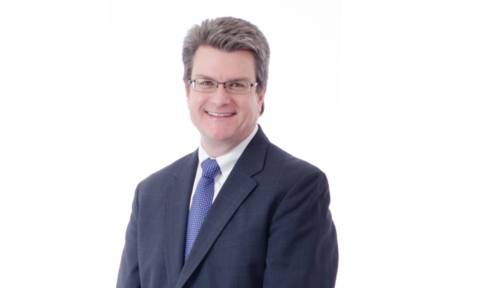Frontier revealed it is conducting tests of how it can use fixed wireless to address the broadband availability problem in very rural areas it is attempting to serve by using the FCC’s CAF-II funds.
Perley McBride, CFO of Frontier confirmed it was testing broadband wireless during the Goldman Sachs Communacopia Conference held in September.

McBride said that Frontier believes that this could be a “good solution” to the deployment challenge “in very rural America[,] and if it works the way [Frontier is] expecting it to work, . . . [Frontier] will deploy more of that next year.”
RELATED: Frontier will gain revenue benefits from CAF-II program, says Jefferies
In 2015, the telco accepted $283 million in CAF-II support from the FCC, which it says will enable it to build out broadband service to over 650,000 rural locations that it could not economically reach before.
Overall, Frontier has continued to make progress with its CAF-II obligations.
As of the end of June, Frontier had reached the 40% milestone in nine states: Arizona, Connecticut, Georgia, Montana, New York, North Carolina, Pennsylvania, Washington and West Virginia.
“We are already well on our way, with a deadline to reach 40 percent of those homes and businesses— over 500,000 — by year-end 2017,” Frontier said in a FCC filing. “We also continue to explore all possible avenues for further expanding broadband in high-cost rural areas, including through the CAF Phase II Auction.”
Frontier added that “as we continue this effort to bridge the digital divide, we believe that wireless spectrum allocated with rules that accommodate fixed point-to-multipoint.”
Windstream, Consolidated see value
Frontier is not the only rural centric provider that sees value in using fixed wireless to enhance rural broadband coverage.
In a joint FCC filing (PDF) with Frontier related to a request to create flexible use of spectrum bands between 3.7 and 24 GHz, Consolidated and Windstream also expressed interest in being able to use 3.7-4.2 GHz band spectrum for rural fixed point-to-multipoint deployments, such as through the rules proposed by the Broadband Access Coalition (“BAC”).
The service providers said that these spectrum bands would “provide another key tool in the toolbox to reach the hardest to serve rural Americans.”
Overall, the three service providers said their commitment to expanding broadband to more homes via the CAF-II program would be enhanced if they could get access to these spectrum bands.
“In particular, our companies are in the process of investing more than three billion dollars to bring broadband to more than a million homes and businesses (representing more than two and a half million Americans) each year as part of Phase II of the Connect America Fund (“CAF”) program,” the service providers said in their joint filing. “Given this massive scale of investment – scheduled through year-end 2020 – making this spectrum available as quickly as possible would enable our companies to provide broadband to more Americans, especially in the most rural parts of our footprints. This underutilized spectrum presents the Commission with a rare opportunity to further promote rural broadband expansion.”
What makes these spectrum bands a good fit for rural areas is that unlike 5 GHz and higher bands, these bands allow greater success connecting homes and businesses through obstructions such as trees and buildings.
At the same time, the trio said that allowing fixed point-to-multipoint rural deployments in other bands the FCC is considering— such as the 5.925-6.425 GHz and the 6.425-7.125 GHz bands— would also assist in rural broadband expansion.
However, the three providers emphasized that the 3.7-4.2 GHz band “offers a unique opportunity to greatly increase bandwidths offered and expand broadband reach.”
Realigning spectrum rules
While these bands offer the best possibilities to address rural broadband where service providers can’t build a wireline business case, the service providers said that the rules need to allow for point-to-multipoint deployments.
However, the issue they cite is that the traditional mobile licensing schemes and license areas don’t address fixed wireless deployments and can hold up rural broadband deployment if the spectrum is underused.
One way to overcome this issue is to consider the Broadband Access Coalition (BAC) to update Part 101 rules so the spectrum can be made available to other rural providers. The BAC has filed a petition for rulemaking proposing a straightforward way to update Part 101 rules so that this spectrum can be made available in the very near term.
The companies said that by “adopting near-term rules for the 3.7-4.2 GHz band that accommodates fixed wireless, such as that proposed by the BAC, obviates these problems with traditional mobile schemes.”
“While our companies continue to evaluate the specifics of this plan, at a minimum it focuses the Commission upon the correct goal: ensuring that the spectrum is not locked into large mobile wireless geographic licenses that do not allow for fixed wireless use,” the companies said. “Simply put, BAC’s proposal offers a straightforward path to unleashing this spectrum, and it may be the best way to start ensuring this spectrum starts paying dividends to rural America.”
